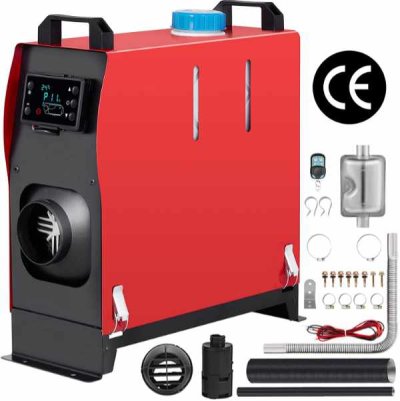most, if not all, forced air heaters will have a maximum distance to first air outlet. sometimes this is a short as 5 feet. that's not to say that it won't still put out heat if your duct is longer than that, but there could be warranty issues.
that distance is about easing the back pressure in the duct so the heater can push the heat away from itself. it will reduce the lifespan of the heater if you don't duct it properly.
that said, i have an espar d4 with double the distance to first outlet. as a liveaboard i got about two years before the combustion blower needed replacing. i just kept a spare on-hand so i didn't have to wait for delivery. they never fail if it's not freezing outside.

